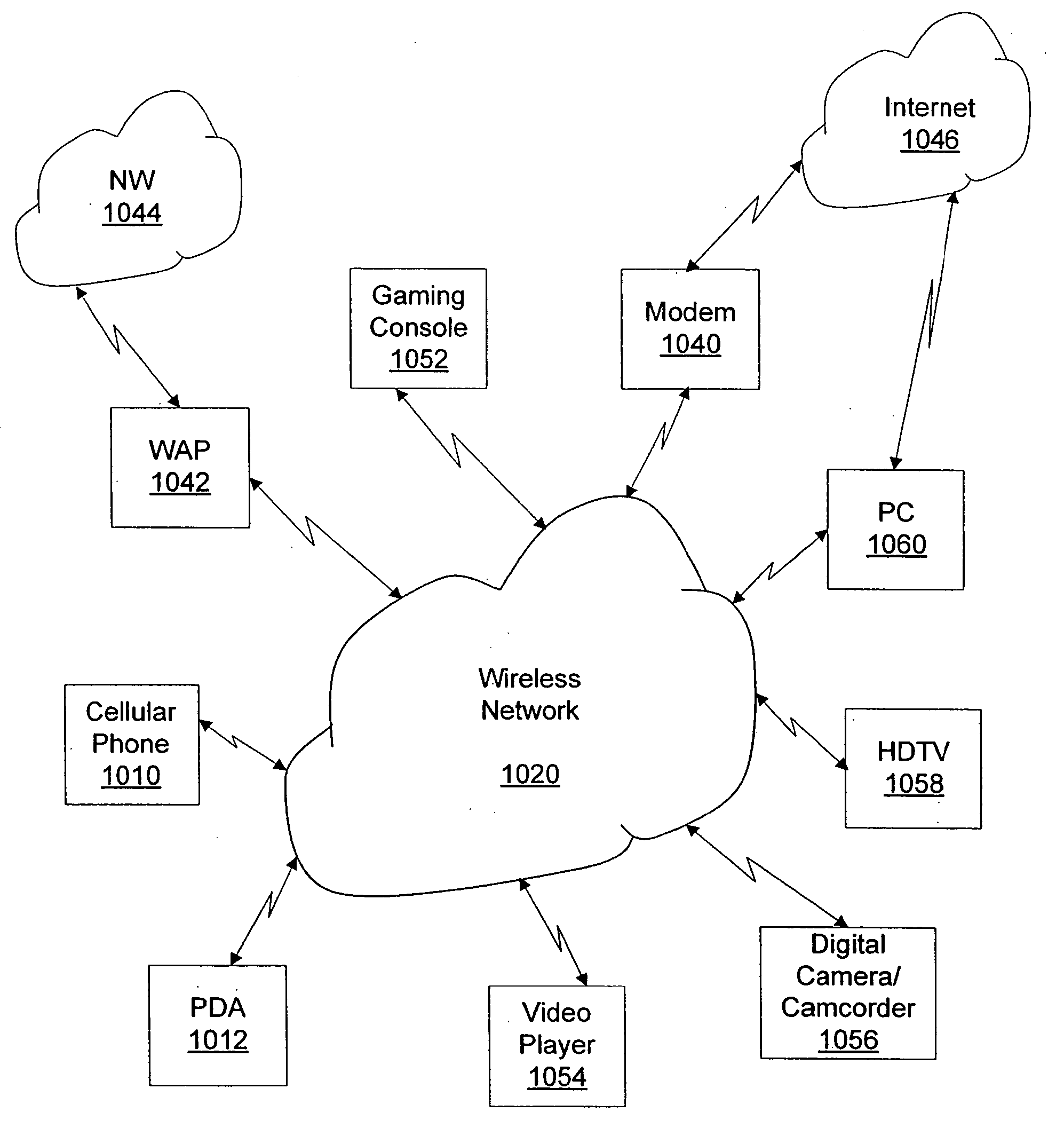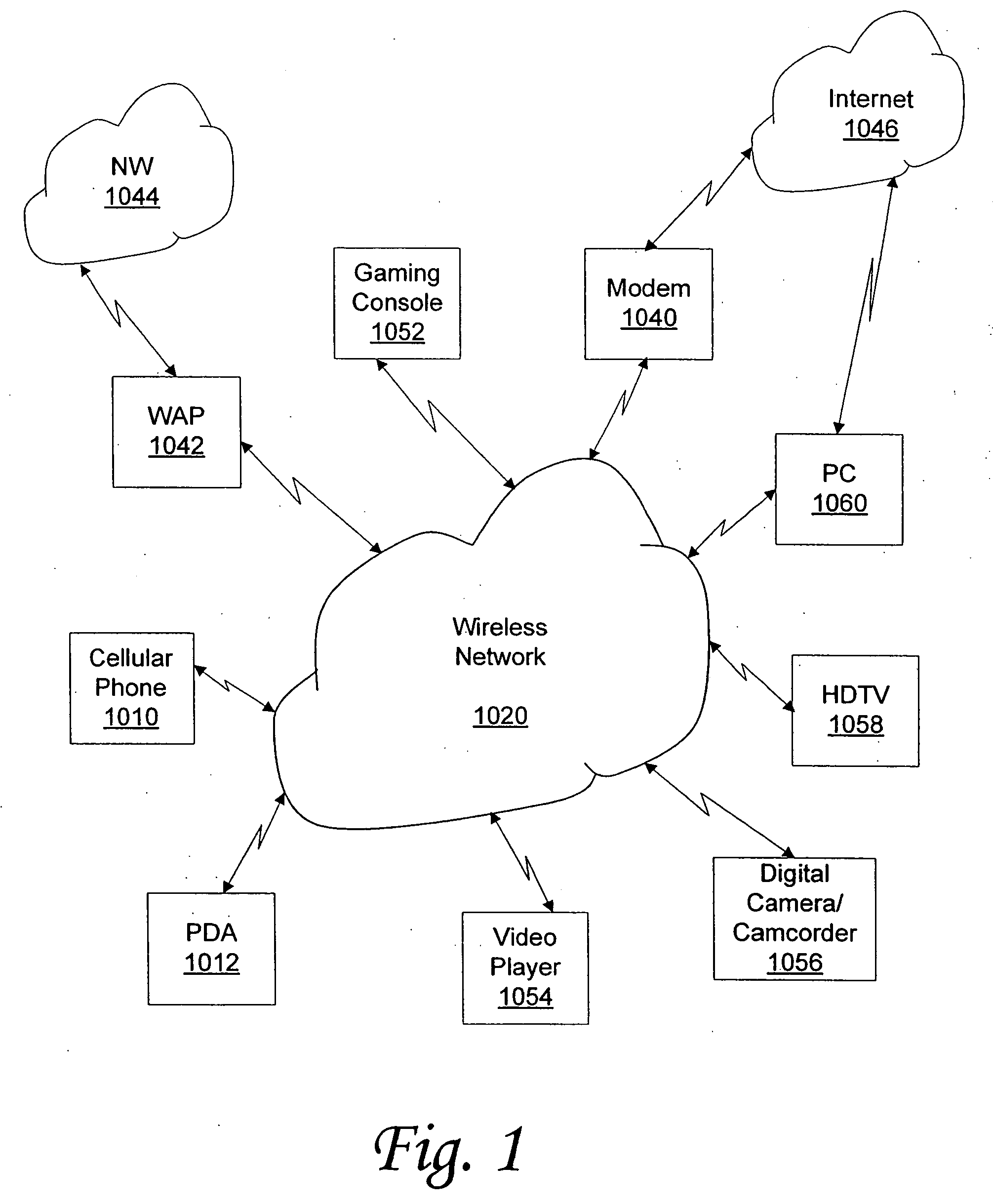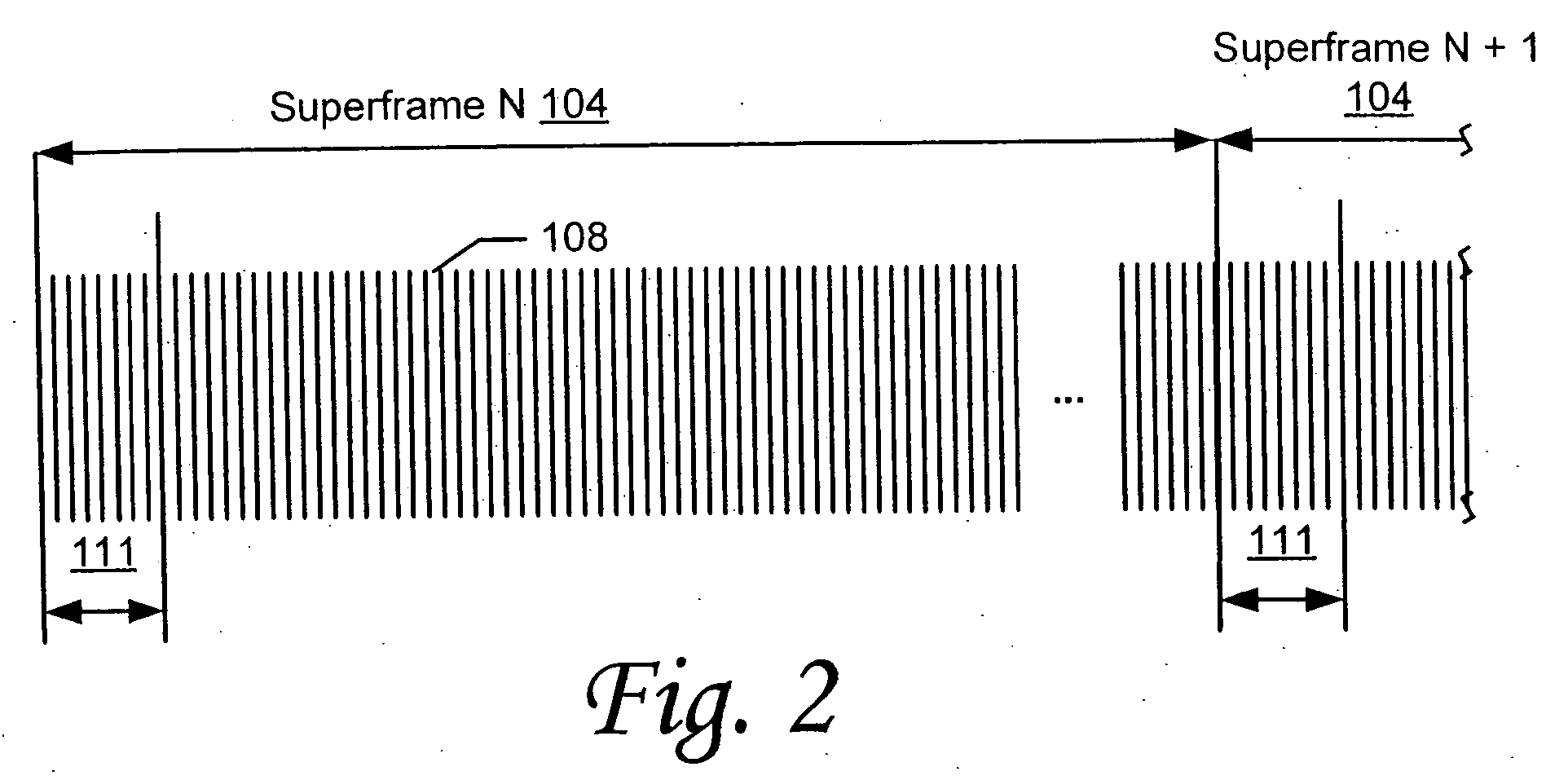Defragmentation of communication channel allocations
a technology of communication channel and allocation, applied in the field of communication channels, can solve the problems of inefficiency in bandwidth allocation, difficulty in managing multiple communications across a limited channel, and risk of encountering a communication conflict between one or more devices on the channel, and achieve the effect of increasing bandwidth availability
- Summary
- Abstract
- Description
- Claims
- Application Information
AI Technical Summary
Benefits of technology
Problems solved by technology
Method used
Image
Examples
Embodiment Construction
[0033] The present invention is directed toward a system and method for providing defragmentation of communication channel allocations. The communication channel can be that of a communication network or other communication channel. One example communication channel is a wireless network. An exemplary implementation of a wireless network is a network as specified by the WiMedia-MBOA (Multiband OFDM Alliance), although the invention can be implemented with other networks and communication channels as well.
[0034] Before describing the invention in detail, it is useful to describe an example environment in which the invention can be implemented. One such example is a wireless beaconing network in which multiple electronic devices (for example, computers and computing devices, cellular telephones, personal digital assistants, motion and still cameras, among others) can communicate and share data, content and other information with one another. One example of such a network is that spec...
PUM
 Login to View More
Login to View More Abstract
Description
Claims
Application Information
 Login to View More
Login to View More - R&D
- Intellectual Property
- Life Sciences
- Materials
- Tech Scout
- Unparalleled Data Quality
- Higher Quality Content
- 60% Fewer Hallucinations
Browse by: Latest US Patents, China's latest patents, Technical Efficacy Thesaurus, Application Domain, Technology Topic, Popular Technical Reports.
© 2025 PatSnap. All rights reserved.Legal|Privacy policy|Modern Slavery Act Transparency Statement|Sitemap|About US| Contact US: help@patsnap.com



